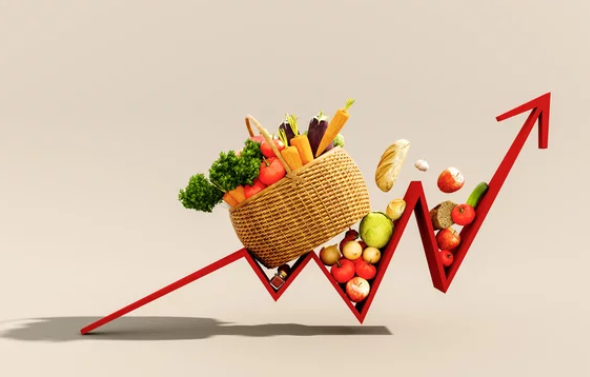
BLOG
South Africa's consumer food inflation decelerates further

The pace of an increase in South Africa's consumer food prices continues to slow. This is a welcome development as we spent the past few months worried about the faster pace of food prices.
The recent data from Statistics South Africa shows that South Africa's consumer food inflation slowed to 4,4% year-on-year in April 2024 (from 4,9% in the previous month).
This moderation in inflation was underpinned by the
deceleration across most food products, except for "fruit and
vegetables", which lifted mildly from the last month. The uptick in fruit
and vegetables is mainly due to base effects, but these increases should remain
mild as supplies of most products are abundant.
A closer look at other major food products in the food
basket shows the moderation in meat prices. This reflects an improvement in
meat supplies after some constraints at the end of 2023 because of avian
influenza. There is now anecdotal evidence that the restocking process is
underway, and there is improvement in poultry product supplies nationwide.
Moreover, the prices of rice and vegetable oils have
continued to moderate due to increased global supplies, and South Africa is a
significant importer of these products.
The wheat prices are also relatively lower than last
year, although we have seen a price rally recently.
Global agricultural production
At the end of last year, when India, a significant
role player in global rice production and exports, limited its exports, there were
concerns about a long-lasting price increase. Indeed, in the months towards the
end of 2023, global rice prices rallied, causing food security concerns.
But we now see some moderation, which reflects the
reasonably higher supplies in various major rice producers, and that supply
changes have adjusted somewhat since India's decisions.
The prospects for the new season are also comforting.
The United States Department of Agriculture estimates the 2024/25 global rice production at 527
million tonnes, up 2%
from the previous season. This is on the back of the expected large crop in
Asia.
In the case of what, the supplies globally remain
plentiful, and the new season is promising. For example, the United States
Department of Agriculture forecasts the 2024/25 global wheat harvest to be 798
million tonnes, up 1%
from the previous season. The bigger harvests are expected in Canada,
Australia, the US, Kazakhstan, and China.
Regarding global vegetable oil supplies, the United
States Department of Agriculture forecasts the 2024/25 global soybean
harvest at 422 million tonnes,
up 6% year-on-year. This improvement is due to the expected large harvest in
Brazil, Argentina and the US.
The global sunflower seed production is also at 57
million tonnes, roughly unchanged from the 2023/24 season.
Domestic currency moves are vital for food imports
Still, the exchange rate will also matter much in the
months ahead, as South Africa imports ample wheat, rice, and palm oil.
Concluding view
Overall, there remains increased uncertainty about
South Africa's consumer food inflation path for 2024, with some upside risks in
various products.
Still, the underlying factors are not all one-sided,
and one has to reflect on the price movements and weighting of multiple
products when considering their food price forecast.
Our primary concern remains the grains-related
products in the food basket because of the domestic poor white maize harvest
and the potential upside pressure on prices. South Africa's white maize harvest
is down 25%, estimated at 6,4 million tonnes in the 2023/24 season. The risks
of other food products are less pronounced, and recent price developments
reflect this view.
Wandile Sihlobo is the chief economist
at the Agricultural Business Chamber of SA and a senior fellow in
Stellenbosch University's Department of Agricultural Economics. His latest book
is "A Country of Two Agricultures".

0 COMMENTS
LEAVE A COMMENT